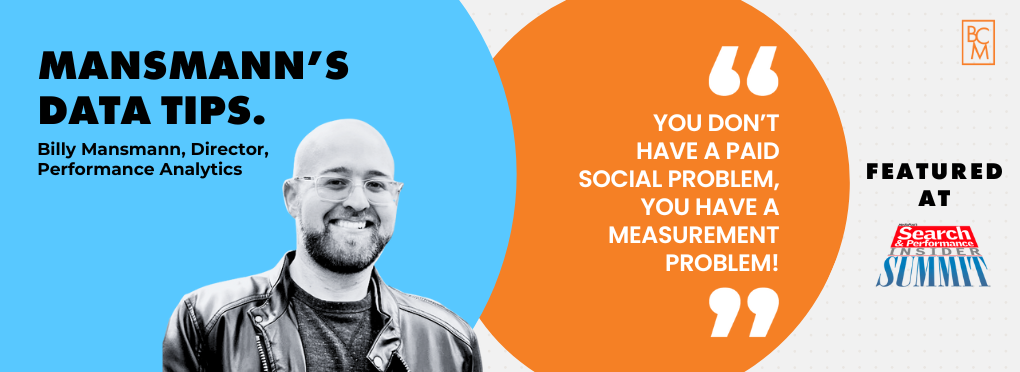Maximizing Your Ad Campaigns with a Google Premier Partner: An Insider’s Guide
How BCM’s Google Premier Partner Status Can Supercharge Your Ad Campaigns If you want to get the best ROI for your paid search ads, you need to know...

In recent years, the definition of a performance marketing agency has changed significantly. Throughout the early days of digital advertising, “performance marketing” was synonymous with “paid search marketing”. Paid search advertising was new & highly profitable on its own.
In 2023, a world-class paid search program is still essential for digital growth. But a performance marketing agency like Beeby Clark +Meyler recognizes that an A+ paid search program can’t do it alone. For clients to hit their growth goals, more needs to be done in the ever-expanding world of digital marketing.

Brands must do two things to grow: capture demand & create new demand. Without doing both, brands & agencies will not see success.
Paid search advertising fits into the demand capture bucket: you are capturing scaling your existing audiences. This represents the audience of people that are already aware of & considering your brand, your active audience. Converting this active audience is an essential part of digital advertising; it is how brands take potential customers and turn them into sales.
Not all of a brand’s audience is active, however. There is a much larger audience of people that are near-active. They are not in-market for your product yet, but they are going to be soon. A successful digital marketing program should be hitting these near-active audiences, creating awareness & preference before they become active. This is how we successfully create demand.
Tactics like paid social often fall in this demand creation bucket, but have a lot of untapped potential. They are not driving an immediate last click ROI so brands quickly ditch them to focus solely on demand capture. This strategy will get brands a really strong last-click ROI, but will not drive sustainable growth.
At BCM, we believe that unlocking better measurement is the key to sustainable growth. Digital advertising veterans have all heard that social advertising “doesn’t work for us”. Typically, what they mean by that is “Meta ads have a low last-click ROI”. When we hear that, this tells us that the brands don’t have a social media problem, they have a measurement problem.

Billy Mansmann, the Director of Performance Analytics at BCM, demonstrates how a familiar scenario turned into an enlightening learning experience for BCM clients.
The Client Background: Using an audience insight tool called Resonate, BCM knew that a client’s audience highly indexed on social media platforms, Meta especially.
The Problem: The social media campaigns were not delivering when it came to last-click ROI. BCM knew the audience was engaged on social media, but conversions weren’t showing in the existing last-click attribution model.
The Solution: To better understand the value of the client’s social media investment, BCM turned to data modeling in R (a free statistical coding software) to look at the impact of Meta activation. To do this, Mansmann modeled brand Google search demand as a function of spend on Meta to demonstrate how social investment is positively impacting things beyond last-click ROI.
Initially, the model didn’t indicate that Meta was providing lift. There was no consistent relationship between social spend & search demand. However, BCM understood that the data wasn’t clearcut: there were other factors in play for the client, such as seasonality. Anyone familiar with e-commerce brands can see dramatic spikes in website traffic and sales surrounding peak periods like Black Friday/Cyber Monday. To properly assess the impact of Meta, BCM needed to consider these types of seasonal fluctuations.
Once BCM accounted for the seasonality in its data modeling, everything made more sense: the relationship between Meta spend investment and brand demand became linear. The results indicated that the client’s investment in Meta since 2022 had grown brand demand by 16%.
While Meta didn’t have the last click ROI, this growth in brand searches proved that Meta was having a statistically significant impact on overall results.
As a result of this analysis, BCM worked with the client to reconsider the existing attribution model which focused solely on last-click metrics and instead adopt an approach that looked at the combined impact of channels.
When including the impact that Meta was having on search, the attributed ROAS for Meta increased by 150%, making growth in the channel much more viable in the future.
The immediate impact of this analysis was a change in attribution, but in the big picture, this highlighted an even more important point: the only way digital brands are going to grow in 2023 & beyond is through improvements in measurement.
All brands face a few key challenges that necessitate a different approach to measurement:
Mansmann advises avoiding what he calls the direct response loop. When a business is struggling to hit their growth goals, it is natural to only invest in the tactics that they know will drive a last-click ROI (their active audience). This usually comes at the expense of tactics that focus on converting the near-active audience.
Without demand creation, the well of demand dries up very quickly. Suddenly, the business finds themselves as the end of the year with no new demand created and faces even more aggressive growth goals the next year. Facing another revenue gap, brands again focus solely on last-click tactics, again at the expense of tactics that will drive demand. The business is stuck in a loop, with no foreseeable way out.
The only way to break this loop is by shifting measurement away from solely last-click ROI. While this is an important part of any digital marketing program, brands need to adopt other approaches to measurements such as:

Adopting these approaches allows brands and agencies to have a much more holistic view of what their media is doing and how their media is working together to drive business growth.
Last-click measurement has incentivized brands and agencies to view media channels in a silo. The solution to growing your business is not just working more efficiently within this model, but embracing an approach that looks beyond it.
Billy Mansmann is Director, Performance Analytics at Beeby Clark + Meyler (BCM), an integrative performance-based digital marketing agency specializing in optimization and marketing tool integration through automation and precise analytics. BCM propels clients by creating marketing campaigns that scale with their growth.
A master of trend-based analytics, Mansmann speaks at the Search & Performance Insiders Summit about his team’s case study about the positive effect of investing in social advertising to improve brand search volume and how to measure related metrics for accurate results. Here, he covers:
This statistically sound approach can enhance accuracy and marketing for most brands that are willing to try. Because the approach is data-backed, it’s less risky, and can increase the success of social media response and attribution.

How BCM’s Google Premier Partner Status Can Supercharge Your Ad Campaigns If you want to get the best ROI for your paid search ads, you need to know...

Google Smart Bidding is becoming very prevalent for all accounts and campaigns. There are several target goals that can be chosen, from maximizing...